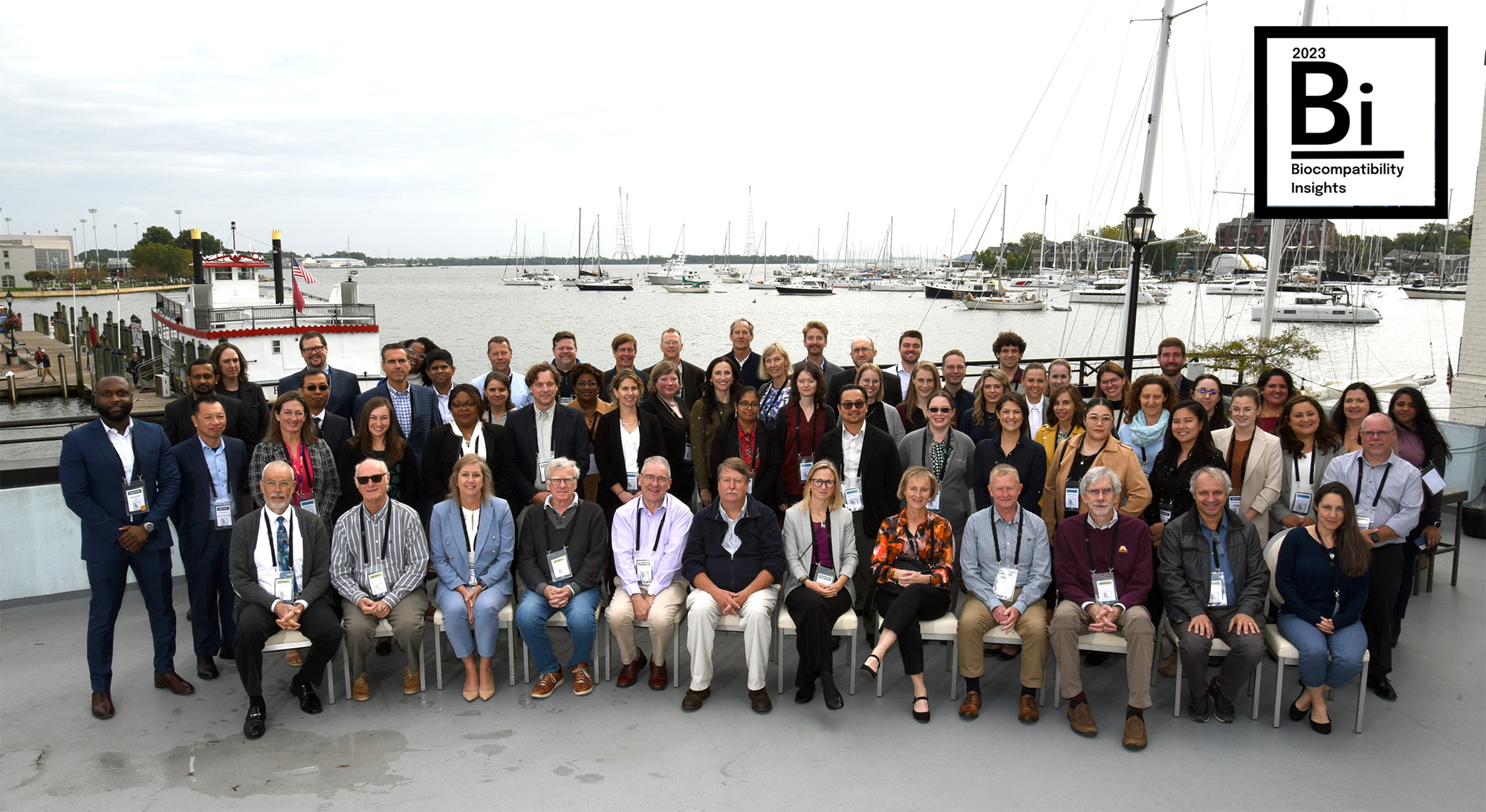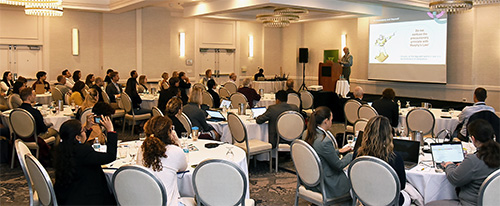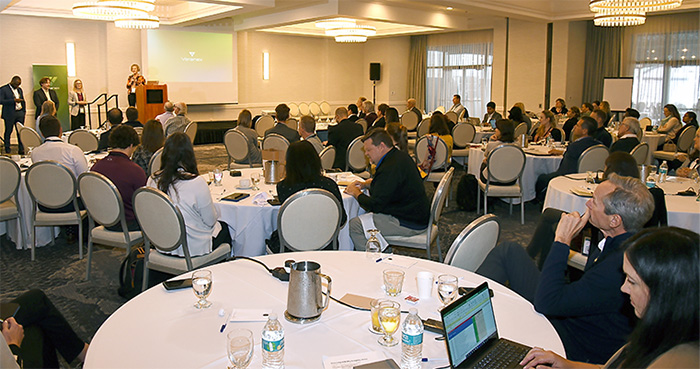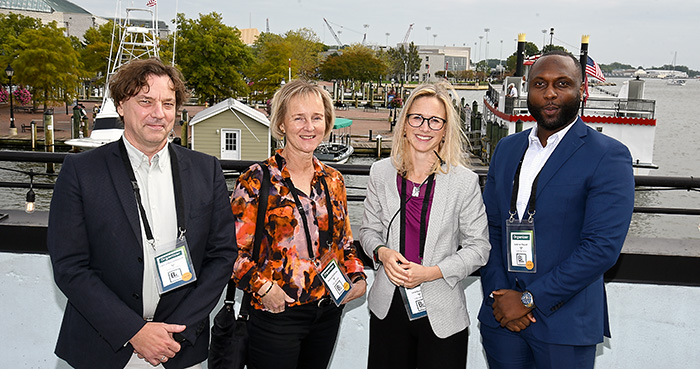
This year’s Biocompatibility Insights conference took place in Annapolis, MD, US from September 25–27, 2023. The framework for the event was “Exploring the science behind the regulations” with the sub theme “Addressing challenges in medical device toxicology.
Keynote speaker Jeremy Tinkler (Chair ISO TC) kicked off the event with a talk centered around the need to invest more time and resources in improving the quality of chemistry. He pointed out that a future ISO/TS 11967 (Biological evaluation of medical devices. Requirements for interlaboratory studies to demonstrate the applicability of validated in-vitro methods to assess the skin sensitization of medical devices) will hopefully further improve quality. He also mentioned additional topics such as NAMs, QSAR, and artificial intelligence.
“This kind of conference is really needed. It’s on a scientific level that other conferences don’t match”
Quote From Participant

For the conference, experts and leaders from the ISO, the US FDA, global research consulting firms, Medtronic and Veranex discussed some of the broad challenges that we face in medical device toxicology. Here’s a high-level summary of what was covered:
The Current State of ISO 10993
This portion included a keynote speech from Jeremy Tinkler and talk from Ron Brown (Risk Science Consortium, US) on recent pressing challenges in medical device toxicology.
The Role of Chemistry in Evaluation of Medical Devices
Joshua Young (FDA CDRH, US) discussed common challenges in chemical analysis and strategies when seeking feedback from the US FDA. Eric Sussman (MCRA, US) presented challenges in navigating laboratory studies and regulatory submissions in the changing environment of chemical characterization. He pointed out that non-targeted analyses are not a full replacement for biological tests and stressed the importance of pilot studies.
Aspects of Extractions
Ted Heise (Convenor 10993-18, MED Institute, US) covered the use of simulating solvents in medical devices and adjacent disciplines. He informed attendees that the WG14 continues to work on updates within the part 18 for standardized extraction methods. Jianwei Li (Chemical Characterization Solutions, US) talked about the different factors that impact release.
Toxicological Risk Assessments
Sherry Parker (SParker Consulting, US) presented the changes in the new revision and also mentioned some potential future-related updates of ISO/TS 21726, TTC for irritation/sensitization, and read-across. Joel Cohen (Gradient, US) continued with a walk- through of case studies addressing identification and assessment of potentially carcinogenic substances in medical devices, cohort of concern, and common medical device degradation products. Kimberly Ehman (WuXi AppTec, US) discussed the use of simulated-use extractable studies to refine exposure estimation for toxicology risk assessment.

When and Why are Implantation Studies Really Relevant?
To start day two of the event, Lars Magnus Bjursten (Convenor ISO 18562, Sr. Professor Bioimplant Research) posed the question of whether implantations studies are relevant. He posed that it is unlikely that an implantation study in tissue adds any useful information if no adverse effects have been seen in cytotoxicity, irritation, sensitization, systemic toxicity, or chemical characterization. Ron Brown (Risk Science Consortium, US) continued with quantitative in-vitro in vivo extrapolation of nickel toxicity to tissues adjacent to metallic implant.
New Risk Assessment Approaches to Evaluate Skin Sensitization
Kelly Coleman (Medtronic, US) gave an update on WG8 (ISO 10993-10) and explained the challenge with gaining acceptance from regulatory bodies. Alex Topsha (UNC-Chappel Hill, US).


Safety Assessment Addressing Inhalation
In a joint talk from Lina Burman (Veranex) and Jianwei Li, attendees learned about the main changes to ISO 18562. Jianwei explained why the gas flow does not affect the migrated amounts of VOCs and potential effects from substances in the gas phase. Amy Clippinger (PETA Science Consortium International) discussed how animal test methods cannot be assumed to be reproducible or provide data relevant to human biology, and therefore, should not be the default reference method for determining accuracy of another method.
The conference ended with Arthur Brandwood (Project Leader – revision of ISO 10993-1, AU) giving his reflections on what was presented and discussed during the conference as well as a panel discussion.
“It was fascinating to hear about the progress being made in areas such as New Approach Methods (NAMs). The future looks promising with all the efforts being made to achieve better outcomes, especially when it comes to our ability to fulfil regulatory requirements and, more importantly, ensure we’re creating safe, effective devices”
– Monica Grekula, Director, Biocompatibility & Toxicology
